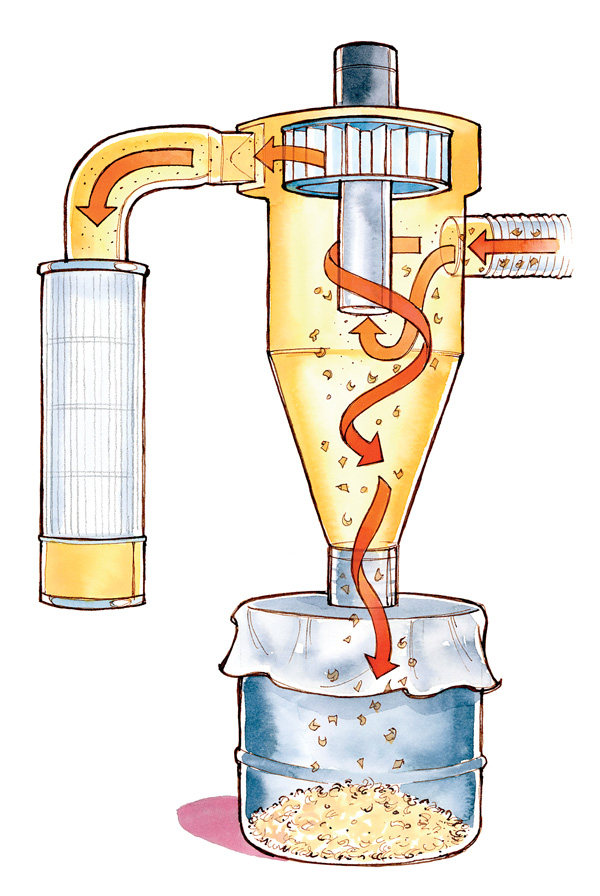Not known Details About Dust Extractor Vs Shop Vac
Wiki Article
Fascination About Dust Extractor Vs Shop Vac
Table of ContentsGetting My Dust Extractor Vs Shop Vac To WorkDust Extractor Vs Shop Vac Fundamentals ExplainedFacts About Dust Extractor Vs Shop Vac Revealed5 Easy Facts About Dust Extractor Vs Shop Vac ShownThe Buzz on Dust Extractor Vs Shop Vac6 Easy Facts About Dust Extractor Vs Shop Vac Explained
The difficulties for shop dust collection systems rotate around crystalline silica dirt, carbon monoxide, as well as heat, which are harmful mixes. These factors make meeting air top quality standards hard as well as requiring. Therefore, when choosing a dirt control system for a shop, the first consideration is the capacity of the unit to stand up to harsh and harmful office problems.Besides the evident conditions, the selected tools has to meet the policies of OSHA, the EPA, and also the NFPA. To fulfill those standards, dust collection systems utilize shakeout rooms, collection hoods, melt, mold and mildew pouring, cooling hoods, and exhaust stacks. Pleated bag and cartridge-style collectors have a highly efficient filtering system in addition to a compact dimension as well as minimized stress drop.
Dust collection systems for this type of operation need to be particularly created to fit the type of covering being used. The function of the system is to control and decrease overspray as well as dust.
Our Dust Extractor Vs Shop Vac Ideas
It would appear most likely to enhance air movement and activity, this type of remedy may be ineffective and waste energy. The layout of the booth depends on the force of the air getting in the cell or booth. For many systems, it is essential to have a small vacuum cleaner in the cubicle to prevent feasible favorable pressure.Another technique is merely placing the make-up air connection on the top of the cubicle. No matter the style, it is essential for the cleansing of the air to have cross ventilation. Just like a cleanroom, airflow in a thermal spray booth can be either straight or downward, though the down design is best for dirt collection systems. dust extractor vs shop vac.
The pharmaceutical sector is a very controlled sector with comprehensive as well as precise regulations. Dust from drugs is generated mainly during the manufacturing and also product packaging of items - dust extractor vs shop vac. Each action of generating a medicine, which includes granulating, drying, mixing, pressing, finish, and also grinding, generates huge amounts of dirt that need to be removed.
The Ultimate Guide To Dust Extractor Vs Shop Vac

HEPA filters are generally located in pharmaceutical dirt control systems given that they are the most effective and dependable. Similar to a foundry system, they are installed as an additional protection to attain absolutely no emissions. Recycling produces a lot of dust as a natural result of diminishing things to their basic materials.
Dust originates after materials are shredded, crushed, or have paint or lacquer got rid of. All reusing facilities are required to abide by air top quality requirements. As they function to satisfy quality standards and also control contaminants, they have acknowledged that dirt control is a major concern, leading to the wide use dust collection systems to minimize as well as consist of the issue.
Dust Extractor Vs Shop Vac Fundamentals Explained
When makers select a dust control system, they are encouraged by manufacturers regarding the kind of system that would certainly best fit their needs considering that acquiring and also installing a dirt control system is a major financial investment. Particle issue comes in a wide array of kinds, from silicon dirt to timber chips and also sawdust.Below is a list of the types of bits that dirt collection systems can remove. Gypsum Gypsum needs a high-efficiency baghouse system with the ability of running at temperature levels near 428 F (220 C). Felt Felt is made use of in read what he said garments production as well as needs dirt collection systems at 3 stages of the procedure.
Sawdust This is the most typical material removed by dirt collection systems. Cartridge or baghouse techniques can be used, with baghouse being the most efficient.
How Dust Extractor Vs Shop Vac can Save You Time, Stress, and Money.
Material filter bags in a cartridge system are the most reliable approach for accumulating dust. Dirt collection systems are covered to include the dirt and clean the air.
With the introduction of dirt collection systems, workers are more secure and extra protected. Sugar Sugar dust is the by-product of the production of sweet. Pulse jet systems are used to maintain the filters of the dirt collection system particulate-free. The gathered product is removed and accumulated in drums. Zinc Zinc dirt is produced in the galvanizing process.
What Does Dust Extractor Vs Shop Vac Do?
A baghouse system is the preferred system. Rice Dust Rice dust has very fine and also minute fragments that gather throughout the manufacturing of rice-based items. A dirt collection system is needed for the defense and also safety continue reading this of employees. Silica Silica is among one of the most typical materials in the world. It is a main component of a number of manufacturing operations, such as the manufacturing of glass, ceramic tile, concrete, and asphalt.Report this wiki page